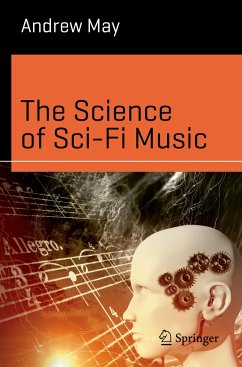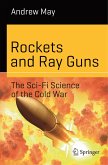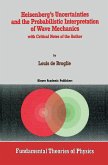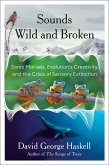The 20th century saw radical changes in the way serious music is composed and produced, including the advent of electronic instruments and novel compositional methods such as serialism and stochastic music. Unlike previous artistic revolutions, this one took its cues from the world of science.
Creating electronic sounds, in the early days, required a well-equipped laboratory and an understanding of acoustic theory. Composition became increasingly "algorithmic", with many composers embracing the mathematics of set theory. The result was some of the most intellectually challenging music ever written - yet also some of the best known, thanks to its rapid assimilation into sci-fi movies and TV shows, from the electronic scores of Forbidden Planet and Dr Who to the other-worldly sounds of 2001: A Space Odyssey.
This book takes a close look at the science behind "science fiction" music, as well as exploring the way sci-fi imagery found its way into the work of musicians like Sun Ra and David Bowie, and how music influenced the science fiction writings of Philip K. Dick and others.
Creating electronic sounds, in the early days, required a well-equipped laboratory and an understanding of acoustic theory. Composition became increasingly "algorithmic", with many composers embracing the mathematics of set theory. The result was some of the most intellectually challenging music ever written - yet also some of the best known, thanks to its rapid assimilation into sci-fi movies and TV shows, from the electronic scores of Forbidden Planet and Dr Who to the other-worldly sounds of 2001: A Space Odyssey.
This book takes a close look at the science behind "science fiction" music, as well as exploring the way sci-fi imagery found its way into the work of musicians like Sun Ra and David Bowie, and how music influenced the science fiction writings of Philip K. Dick and others.
"This book makes satisfying reading. ... the book is elegantly written, thought provoking and entertaining. ... I thought I knew this subject well, but was surprised and delighted to find lots in the book that was quite new to me. Highly recommended." (Steve Marshal, Fortean Times, Issue 412, 2021)
"The book offers a highly accessible and engaging introduction to the science of sci-fi music, with technical detail skilfully balanced with fascinating anecdotes about the people and technological developments that have enabled composers to respond to the challenge of creating otherworldly and alien-sounding music." (Kim Kenobi, London Mathematical Society Newsletter, newsletter.lms.ac.uk, Issue 494, May, 2021)
"If either the development of electronic music and avant garde musical techniques or science fiction is an interest, this book is likely to pique your attention. If both interest you, this is a book that has to be added to your collection." (Popular Science, popsciencebooks.blogspot.com, July 17, 2020)
"The book offers a highly accessible and engaging introduction to the science of sci-fi music, with technical detail skilfully balanced with fascinating anecdotes about the people and technological developments that have enabled composers to respond to the challenge of creating otherworldly and alien-sounding music." (Kim Kenobi, London Mathematical Society Newsletter, newsletter.lms.ac.uk, Issue 494, May, 2021)
"If either the development of electronic music and avant garde musical techniques or science fiction is an interest, this book is likely to pique your attention. If both interest you, this is a book that has to be added to your collection." (Popular Science, popsciencebooks.blogspot.com, July 17, 2020)








